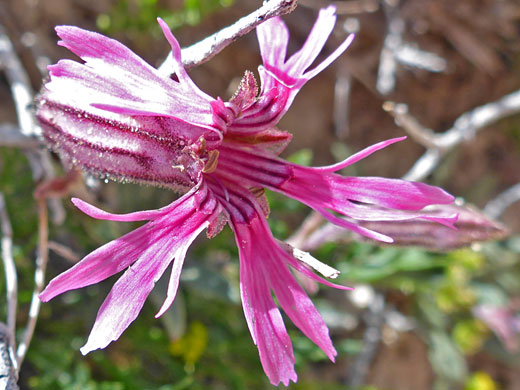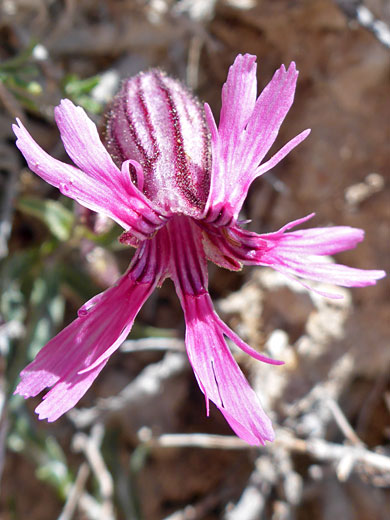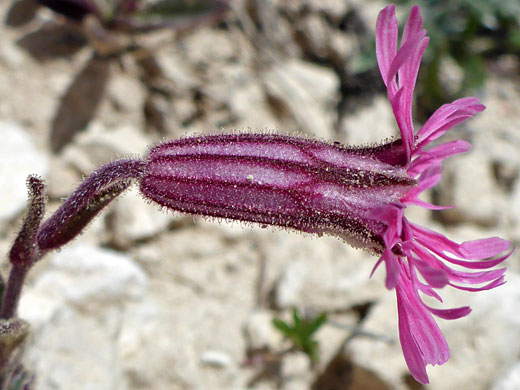Common name:
Plateau catchfly
Family:
Scientific name:
Silene petersonii
Main flower color:
Range:
South and central Utah, and a small area of Nevada
Height:
Up to 6 inches
Habitat:
Barren slopes and ridges, on clayish, gravelly or rocky soils; from 6,500 to 11,000 feet
Leaves:
Oblanceolate to lanceolate, up to 1.5 inches long
Season:
July to August
Silene petersonii is mainly found in Utah - on the Markagunt Plateau, Pausaugunt Plateau and Escalante Mountains in the south, and the Wasatch Plateau in the center, plus a small population in the Spring Mountains of southern Nevada.
Stems are unbranched, and evenly covered by short, sticky, glandular hairs, as are the leaves. Leaves have a single vein, and are oblanceolate at the base, becoming elliptic or lanceolate (and smaller) up the stem. Stem leaves are in three to six opposite pairs.
The relatively large flowers are usually produced singly, at the top of the stem. They have a narrowly bell-shaped, five-lobed calyx, not much constricted at the top, pink in color, up to 0.8 inches in length, and crossed by ten purple ribs. The corolla is pink and its five lobes are divided into two to four differently-sized segments, with irregular margins.
Stems are unbranched, and evenly covered by short, sticky, glandular hairs, as are the leaves. Leaves have a single vein, and are oblanceolate at the base, becoming elliptic or lanceolate (and smaller) up the stem. Stem leaves are in three to six opposite pairs.
The relatively large flowers are usually produced singly, at the top of the stem. They have a narrowly bell-shaped, five-lobed calyx, not much constricted at the top, pink in color, up to 0.8 inches in length, and crossed by ten purple ribs. The corolla is pink and its five lobes are divided into two to four differently-sized segments, with irregular margins.
All Contents © Copyright The American Southwest | Comments and Questions | Contribute | Site Map







